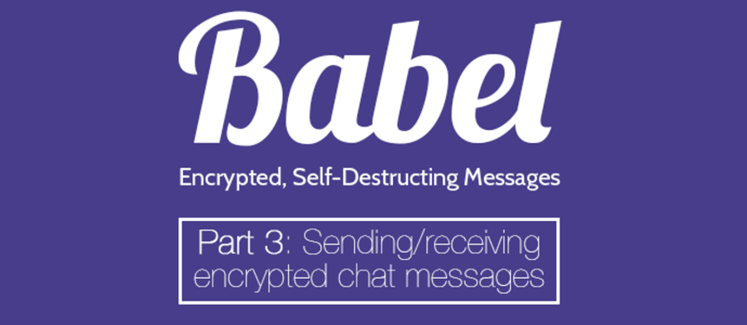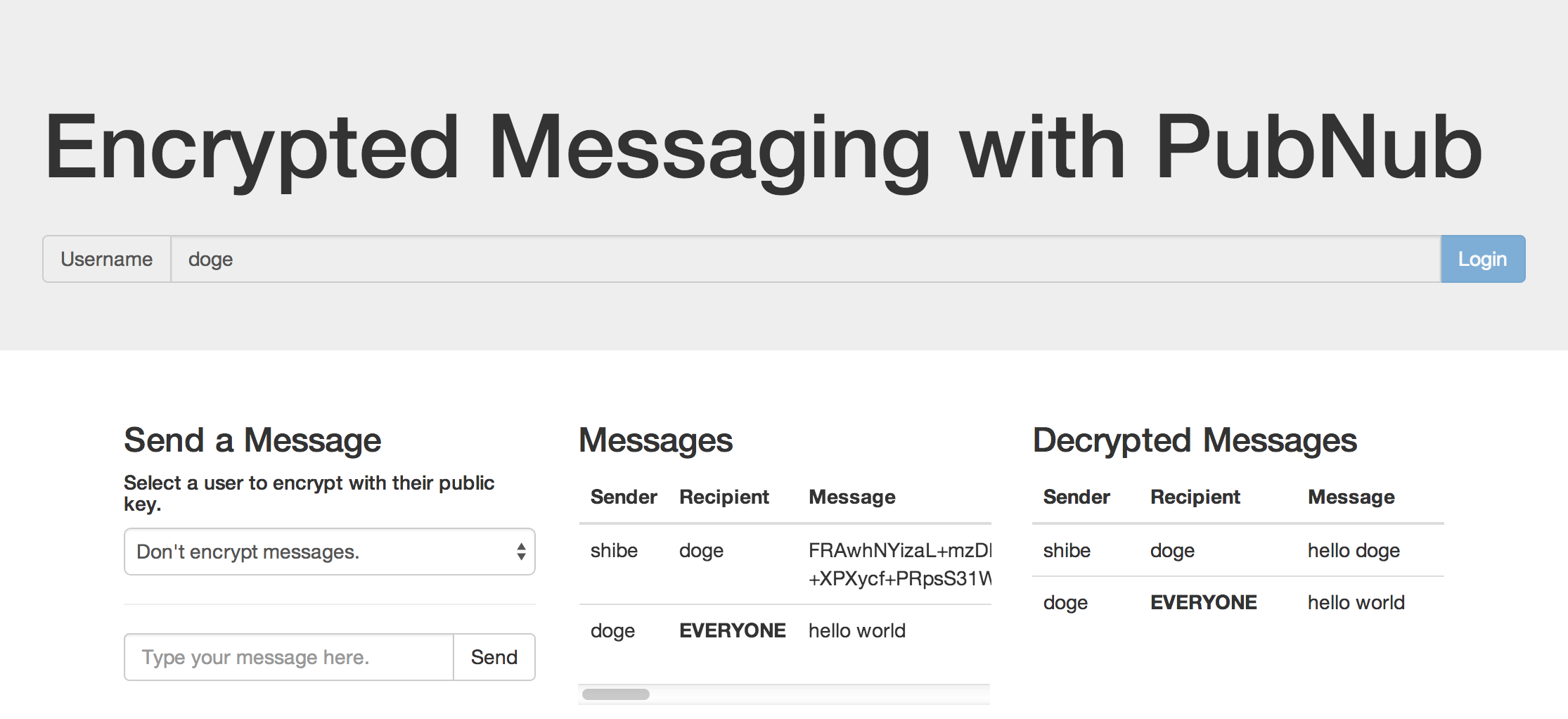

Good News! We’ve launched an all new Chat Resource Center.
We recommend checking out our new Chat Resource Center, which includes overviews, tutorials, and design patterns for building and deploying mobile and web chat.
![]() In this blog post, we’ll walk you through sending and receiving encrypted chat messages. We’ll demonstrate how Babel shares 1024-bit RSA public keys where chat participants will use these keys to send encrypted chat message. Along the way, we’ll also build a messaging system for encrypted chat messages with PubNub. Additionally the asymmetric encrypted payload will be delivered over XMPP and WebSocket streaming 2048-bit SSL TLS connects.
In this blog post, we’ll walk you through sending and receiving encrypted chat messages. We’ll demonstrate how Babel shares 1024-bit RSA public keys where chat participants will use these keys to send encrypted chat message. Along the way, we’ll also build a messaging system for encrypted chat messages with PubNub. Additionally the asymmetric encrypted payload will be delivered over XMPP and WebSocket streaming 2048-bit SSL TLS connects.
Here’s what we’ve covered so far:
- Part One: Set up a chat application and gave an overview of its architecture.
- Part Two: Built a key exchange system, enabling you to share public keys between users.
- Part Four: How to send self destructing chat messages
- Part Five: Building a chatroom UI
This is a five part series on building Babel, an open source chat widget and API built with PubNub. Babel allows you to send and receive self destructing, encrypted chat messages and exchange 1024-bit RSA public keys in a chatroom.
Check out the live working Babel self destructing chat demo. You can also take a look at the source code on our Babel Github Repository. Now, let’s get the tutorial started!
Sending Encrypted Chat Messages over WebSockets
Step 1: Importing the PubNub JavaScript SDK Provides Long Lived Persistent TCP Connections

You’ll first need to sign up for a PubNub account. Once you sign up, you can get your unique PubNub keys in the PubNub Developer Portal.
First things first, let’s import the PubNub JavaScript SDK along with the Cryptico library and initialize PubNub with the SSL parameter set to true. This way, all communication through PubNub will be protected by Transport Layer Security (TLS). Additionally you can Connect to PubNub’s Real-time Global Network using the MQTT protocol which allows you to send messages with symmetric and asymmetric encrypted payloads.
[Read more on: MQTT]
You’ll first need to sign up for a PubNub account. Once you sign up, you can get your unique PubNub keys in the PubNub Developer Portal. Then, import the PubNub JavaScript SDK and to initialize PubNub with your unique keys and SSL enabled.
Next, let’s generate an RSA key that we’ll use to encrypt our messages. Babel uses a slightly modified version of the Cryptico library for performing cryptography with JavaScript, and we’ll use the same library here.
We have to subscribe to a channel and set our state to our username and public key. While we’re subscribing, we’ll also declare two functions, onMessage and onPresence, which we’ll initialize later.
We can get the public keys of all users currently subscribed to a channel simply by calling here_now with state enabled and then storing the data into our users object, which contains a mapping of usernames to their public keys.
onPresence will be called whenever a user leaves or joins the babel channel. So in order to keep users up to date, we’ll call initialize onPresence to call here_now and update users every time it’s called.
Step 3: Encrypted Chat Messaging over WebSockets
Now, let’s implement a function to send encrypted messages to other users. sendMessage takes a username and a message to send. If recipient is actually the username of a current user, then sendMessage will encrypt the message with the recipient’s public key, which is stored in the users object, and publish a message containing the username of the recipient, the sender, and the encrypted message.
Because we now know what form the messages will be in, we can initialize onMessage to properly handle messages. For now, we’ll enable onMessage so that it recognizes when we’ve received an encrypted message, decrypts the message with our private RSA key, and prints the decrypted message out into the console.
Sending Encrypted Chat Messages – Demo
The embedded demo below has implemented all the code we’ve just written above, with a few additions so that we can send and see messages without looking at the JavaScript Console. You can also check out the Sending Encrypted Chat Messages demo on JSFiddle.
That’s it! We’ve now built a key exchange system and walked you through how to send and receive encrypted messages. Next, we’ll show you how to self destruct your messages.